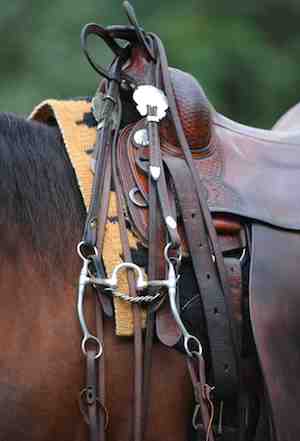
To warm you up, a few riddles and posers:
1. I can be a type of bit, a silly joke, or an icky sound. I am a:
A) curb
B) gag
C) spade
2. Where the bit rests AND where people imbibe.
A) bars
B) curbs
C) benches
3. ‘McCarty’ is NOT my name, but it hints at the right sort of rein.
A) romal
B) split
C) mecate
4. It’s a type of bit and a shovel with a blade. It’s a:
A) glade
B) spade
C) staid
OK, that was fun…now let’s get serious. Sort of:
5. This serves as a throat latch on a bosal headstall.
A) fedora
B) fiador
C) fiat
6. True or false: With a hackamore, control comes mainly from the pressure of the noseband on the bridge of the horse’s nose.
T/F
7. The roller in the port of a curb bit is called a:
A) cricket
B) roach
C) fly
8. True or false: The purpose of a bridle’s curb strap is to enable the bridle to apply pressure to the poll and the bars of the mouth.
T/F
HOW’D YOU DO? (Answers below.)
1. B is correct. A gag bit, sometimes used in barrel racing, is designed so that it can slide upwards on the bridle, applying a unique kind of pressure.
2. A is correct. Bits rest in a horse’s interdental space—that handy area of no teeth known as the bars of the mouth.
3. C is correct. “McCarty” is the cowboy term for the Spanish word “mecate,” the single, extra rein attached to a bosal headstall.
4. B is correct. A spade bit, which can work on the palate of the horse’s mouth, is intended only for horses in the final phase of traditional, multi-year vaquero training.
5. B is correct. A fiador is the rope throatlatch that attaches to the heel knot of the bosal.
6. T is correct. Pressure on the reins brings the bosal into contact with the bridge of a horse’s nose.
7. A is correct. And if you knew that, you probably also know the name comes from the sound it makes when a horse rolls it with his tongue.
8. T is correct. The curb strap achieves this action through leverage via the shanks and mouthpiece of the bit. (So—careful when you adjust that curb!)
Hey! Not already receiving H&R’s fun and informative e-newsletter? Sign up right here.






